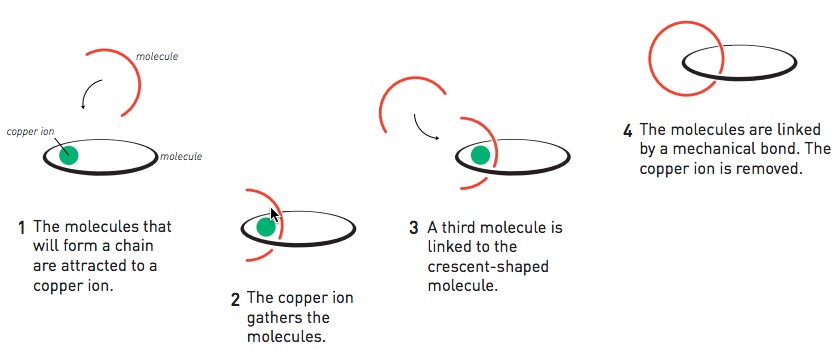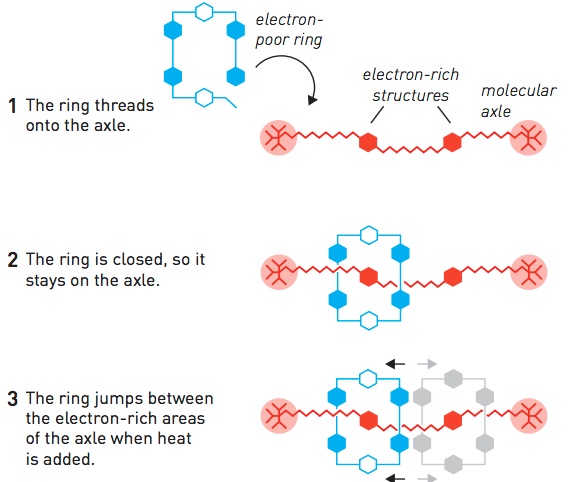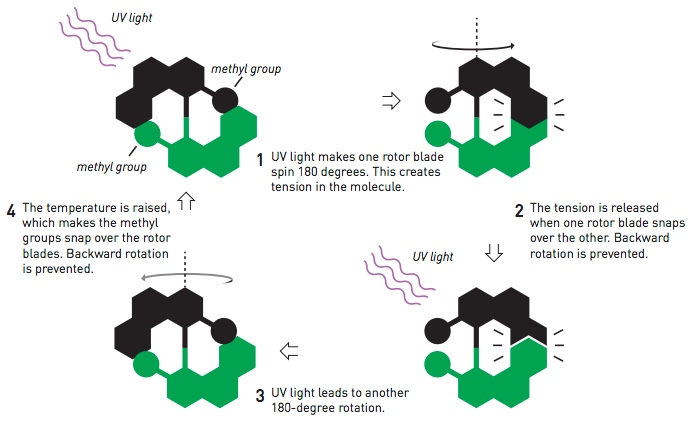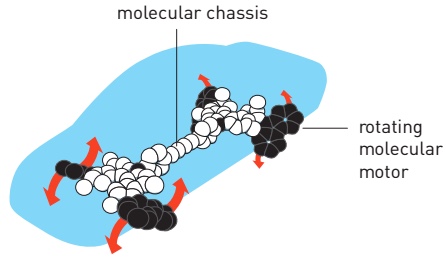Nobel Prize in Chemistry 2016 awarded to three pioneers of molecular machines
October 5, 2016
The Nobel Prize in Chemistry 2016 was awarded today to Jean-Pierre Sauvage, PhD, Sir J. Fraser Stoddart,PhD, and Bernard L. Feringa, PhD, for their design and production of molecular machines. They have developed molecules with controllable movements, which can perform a task when energy is added.

Jean-Pierre Sauvage used a copper ion to interlock molecules using a mechanical bond. (credit: The Royal Swedish Academy of Sciences)
The first step towards a molecular machine was taken by Jean-Pierre Sauvage in 1983, when he succeeded in linking two ring-shaped molecules together to form a chain, called a catenane. Normally, molecules are joined by strong covalent bonds in which the atoms share electrons, but in the chain they were instead linked by a freer mechanical bond. For a machine to be able to perform a task it must consist of parts that can move relative to each other. The two interlocked rings fulfilled exactly this requirement.

Fraser Stoddart created a rotaxane cyclophane ring that could act as a molecular shuttle, moving along an axle in a controlled manner. (credit: The Royal Swedish Academy of Sciences)
The second step was taken by Fraser Stoddart in 1991, when he developed a rotaxane. He threaded a rotaxane cyclophane molecular ring onto a thin molecular axle and demonstrated that the ring was able to move along the axle — the start of applying topological entanglement in the development of molecular machinery.

(Left) Fraser Stoddart’s (left) rotaxane-based “molecular elevator” and (right) “artificial muscle,” using extension and contraction in a daisy-chain rotaxane structure (credit: The Royal Swedish Academy of Sciences)
Among his other developments based on rotaxanes are a molecular lift, a molecular muscle and a molecule-based computer chip.

Ben Feringa’s molecular motor (the first) was mechanically constructed to spin in a particular direction. His research group has optimized the motor so that it now spins at 12 million revolutions per second. (credit: The Royal Swedish Academy of Sciences)
Bernard Feringa was the first person to develop a molecular motor; in 1999 he got a molecular rotor blade to spin continually in the same direction.

Ben Feringa’s four-wheel drive nanocar, with a molecular chassis and four motors that functioned as wheels (credit: The Royal Swedish Academy of Sciences)
Using molecular motors, he has also rotated a glass cylinder that is 10,000 times bigger than the motor and also designed a nanocar.
2016’s Nobel Laureates in Chemistry have taken molecular systems out of equilibrium’s stalemate and into energy-filled states in which their movements can be controlled. In terms of development, the molecular motor is at the same stage as the electric motor was in the 1830s, when scientists displayed various spinning cranks and wheels, unaware that they would lead to electric trains, washing machines, fans and food processors. Molecular machines will most likely be used in the development of things such as new materials, sensors and energy storage systems.
Jean-Pierre Sauvage, born 1944 in Paris, France. Ph.D. 1971 from the University of Strasbourg, France. Professor Emeritus at the University of Strasbourg and Director of Research Emeritus at the National Center for Scientific Research (CNRS), France.
https://isis.unistra.fr/laboratory-of-inorganic-chemistry-jean-pierre-sauvage
Sir J. Fraser Stoddart, born 1942 in Edinburgh, UK. Ph.D. 1966 from Edinburgh University, UK. Board of Trustees Professor of Chemistry at Northwestern University, Evanston, IL, USA.
http://stoddart.northwestern.edu
Bernard L. Feringa, born 1951 in Barger-Compascuum, the Netherlands. Ph.D.1978 from the University of Groningen, the Netherlands. Professor in Organic Chemistry at the University of Groningen, the Netherlands.
www.benferinga.com